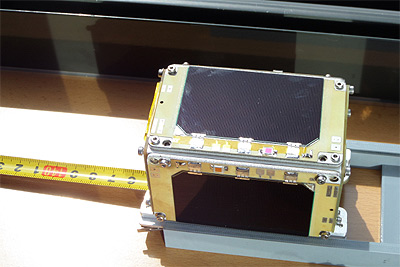According to AMSAT-EA the HADES-D satellite FM repeater is now activated. Several reports has confirmed the repeater is working.
Uplink 145.875 MHz FM
Downlink 436.663 MHz FM
More info from ANS-351:
HADES-D Satellite: Successful Telecommand Response and FM Repeater Tests Ongoing
The HADES-D satellite, launched aboard SpaceX’s Transporter-9 (TR-9) mission on November 11, 2023, has successfully completed a month in orbit. AMSAT-EA reports that, following its separation from the ION SCV-013 Orbital Transfer Vehicle two weeks ago, HADES-D is responding well to telecommands from the ground control station.
Current tests on the FM voice repeater show promising results, demonstrating its effectiveness. However, adjustments to the squelch level are under consideration due to the current configuration requiring increased power for activation. HADES-D’s health status has been confirmed through telemetry, CW, and FM voice beacon receptions from various Earth locations.
Telemetry signals in FSK, CW, and FM voice beacon, operating at 436.666 MHz downlink, transmit to Earth at 0.25 Watts. Demodulation and decoding software for satellite telemetry are available on AMSAT-EA’s website under the Project tab (https://www.amsat-ea.org/proyectos). The FM repeater, with a 40mW power output, may require a robust antenna for optimal receive performance.
Developed alongside the URESAT Antonio de Nebrija, both utilizing the pocketQubes 1.5P platform, HADES-D features advanced solar panels and increased processing capacity. These advancements enable the satellite to transmit telemetry and repeat signals at higher speeds. The incorporation of an FM transponder for voice communications also allows for message retransmission in FSK. Efforts are ongoing to confirm the final Two-Line Elements for streamlined operations.
HADES-D Designated SO-121
HADES-D satellite has been commissioned. After a trial period in which its behavior has been tested at the radioelectric, systems, and energy performance levels, the FM repeater is left active for general use.
At the request of AMSAT-EA, AMSAT has designated HADES-D as Spain-OSCAR 121 (SO-121). AMSAT congratulates AMSAT-EA, thanks them for their contribution to the amateur satellite community, and wishes them continued success on this and future projects.
The repeater works with FM/FSK (MSK144 has been tested too) with an uplink frequency of 145,875 MHz and a downlink frequency of 436,663.5 MHz (a bit lower than the 436.666 MHz expected). We have been able to verify that the modulation is more appropriate by narrowing the bandwidth, so it is recommended to use NFM in those devices allowing it.
AMSAT-EA is drafting a use and operation manual, which will be published shortly and which will indicate in detail some of the characteristics of the satellite and its working modes. Although it is not definitive, Amsat-EA is considering some special operating options such as reserving a day of the week exclusively for digital communications following the example we know with the AO-92.
Finally, please, remember that, as far as we know, HADES-D is the first satellite with FM repeater service mounted on a pocketqube platform. This standard is the smallest in terms of normalized satellite sizes. HADES-D size is 8x5x5 cm. Its panel surface and battery size are much smaller than the rest of the satellite repeaters in use, so HADES-D is not comparable to most of them either in radiated power or signal strength. HADES-D should be considered a QRP satellite.
[ANS thanks Félix Páez, EA4GQS, of the HADES-D team, and Drew Glasbrenner, KO4MA, AMSAT Vice President – Operations and OSCAR Number Administrator, for the above information]

